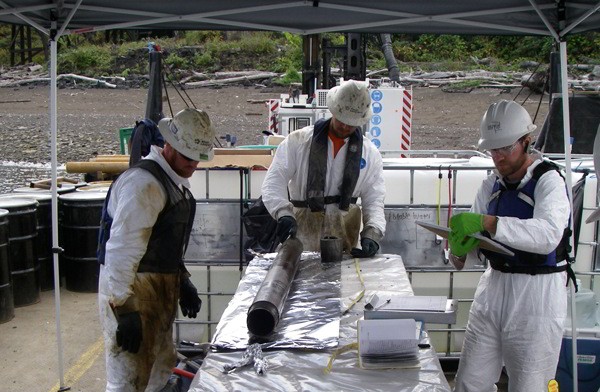Former DDT Manufacturing Facility Site Investigation: Oregon
By David Livermore, R.G., L.H.G., CWRE, Senior Principal

OUR CHALLENGE
DDT and related chemicals from historical pesticide manufacturing and other sources were found in river sediments at the Portland Harbor Superfund site. Early in the project, little was known about the impacts of historical DDT manufacturing on Willamette River sediment. One major challenge was to conduct a cost-effective investigation that could be used to understand the magnitude and distribution of sediment contamination to meet regulatory agency and pre-remedial design needs.
OUR APPROACH
We tackled the problem with a phased investigation approach. Dock- and barge-mounted drilling rigs were used to cost-effectively core and sample at target locations to fill data gaps. Instead of wholesale sample analyses, we used a sequenced program for archived environmental samples. This approach reduced analytical costs and defined the nature and extent of DDT and its metabolites in sediment.
OUR IMPACT
After developing an innovative, 3-dimensional model of DDT contamination, we refined the sediment remediation area based on a mass-removal approach. Using the robust data set and model, the agencies and our client agreed upon a substantial reduction to the originally proposed removal action area footprint, significantly decreasing potential remediation costs.

